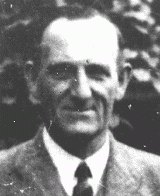You searched for: 外貿推廣seo很好火26星【TG飞机:@bapingseo】波兰谷歌霸屏推广【TG电报:@bapingseo】韓國支付通道【Telegram:@bapingseo】冒泡手机斗地主免费版万豪会在线登录亚博体育ios注册送18金的捕鱼游戏?20220707v9T7kf.html
<< Previous | Displaying results 226-250 of 353 for "外貿推廣seo很好火26星【TG飞机:@bapingseo】波兰谷歌霸屏推广【TG电报:@bapingseo】韓國支付通道【Telegram:@bapingseo】冒泡手机斗地主免费版万豪会在线登录亚博体育ios注册送18金的捕鱼游戏?20220707v9T7kf.html" | Next >>
-
Wladyslaw Piotrowski
ID CardWladyslaw was born to Catholic parents in Russian-occupied Poland. He grew up in Plock, a town located in a rural area north of Warsaw. Wladyslaw married in 1918 and he and his wife, Marie, raised four children. 1933-39: Wladyslaw worked as a bookkeeper, and then as an accountant for a local farmers' cooperative. In 1931 he was sent to the town of Wyszogrod to close a failing branch of the farmers cooperative. A year later, he organized a new, successful cooperative in Wyszogrod with local farmers and…
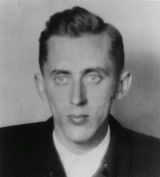
-
Gregor Wohlfahrt
ID CardGregor was the second of six children born to Catholic parents in a village in the part of Austria known as Carinthia. His father was a farmer and quarryman. Disillusioned with Catholicism, his parents became Jehovah's Witnesses and raised their children according to that religion. As a boy, Gregor loved mountain climbing and skiing. 1933-39: Gregor attended school and worked as a waiter. The situation for Jehovah's Witnesses worsened after Germany annexed Austria in March 1938; Witnesses refused to swear…
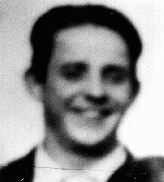
-
Curt Egon Rosenberg
ID CardCurt was the oldest of three children born to a Jewish family in the famous German university city of Goettingen. His father owned a linen factory that had been in the family since it was founded by Curt's grandfather. Goettingen had a small Jewish population, with only one synagogue. Curt attended public school in the city. 1933-39: The Nazis came to power in 1933. A year later, the Rosenbergs' factory was seized and the family was forced to move to Hamburg. Because he was Jewish, Curt was arrested in…
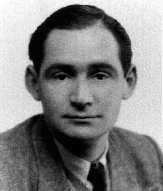
-
Gideon Boissevain
ID CardGideon was known affectionately as "Gi" by his family and friends. His parents were descended from the Huguenots, French Protestants who came to the Netherlands in the 16th and 17th centuries. Gi had two brothers and two sisters, and his father worked in the insurance business. 1933-39: Gi had a large circle of friends, both Christians and Jews, and after school they all liked to get together. He and his friends enjoyed taking bike trips, having parties, and playing records. In the mid-1930s his parents…
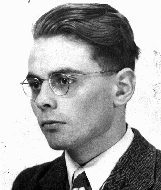
-
German-Soviet Pact
ArticleThe German-Soviet Pact paved the way for the joint invasion and occupation of Poland by Nazi Germany and the Soviet Union in September 1939.
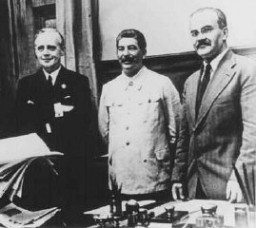
-
Henry Morgenthau Jr.
ArticleHenry Morgenthau Jr had a key role in creating and operating the War Refugee Board, a government agency tasked with rescuing and providing relief for Jews during the Holocaust.
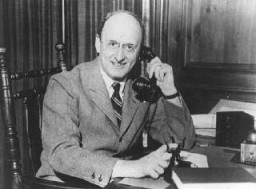
-
German military court trial of French resistance members
FilmFrance signed an armistice with Germany on June 22, 1940, recognizing the right of German authorities to oversee the French administration. Further, German military authorities held jurisdiction over matters of internal security. In this footage, a German military court in Paris tries French citizens charged with resisting measures of the military occupation. Despite harsh military justice, the Germans could not quell opposition in France, and resistance activities would reach a peak during the Allied…

-
Bergen-Belsen: Key Dates
ArticleExplore a timeline of the history of the Bergen-Belsen camp in the Nazi camp system. Initially a POW camp, it became a concentration camp in 1943.
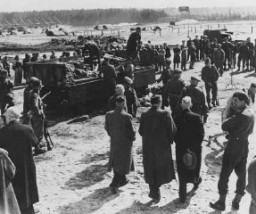
-
Nazi Persecution of Jehovah's Witnesses
ArticleJehovah's Witnesses were subjected to intense persecution under the Nazi regime. Read more to learn why and how the Nazi regime targeted them.

-
The Warsaw Ghetto Uprising
ArticleThe Warsaw ghetto uprising was the largest uprising by Jews during World War II. 100s of ghetto fighters fought heavily armed and well-trained Germans for nearly a month.

-
Resistance inside Germany
ArticleSome individuals and groups in Germany attempted to resist Nazism, despite the risk of being caught and facing punishment. Learn more about their efforts.
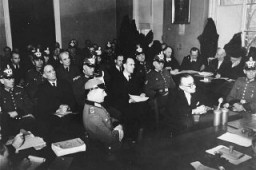
-
Gino Bartali
ArticleIn 2013, Yad Vashem recognized Italian cyclist Gino Bartali as Righteous Among the Nations for his rescue activities. Learn more
-
Althammer
ArticleThe Germans established the Althammer camp in September 1944. It was a subcamp of Auschwitz. Read more about the camp's history and conditions there.
-
Mohamed Helmy
ArticleDr. Mohamed Helmy and Frieda Szturmann helped save a Jewish family in the heart of Nazi Germany. Helmy was the first Arab recognized as Righteous Among the Nations.

-
Letter Asking for Help to Hide Daughter
Timeline EventFebruary 1, 1943. On this date, Selek and Eda Kuenstler wrote to Sophia Zendler and begged her to hide their child.
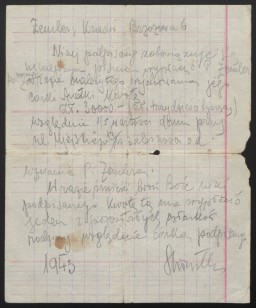
-
Last Diary Entry Written by Otto Wolf
Timeline EventApril 13, 1945. On this date, Otto Wolf, a teen diarist who chronicled his family's experience in hiding, wrote his last diary entry before his death.

-
Page from Otto Wolf's Diary
Timeline EventApril 17, 1945. On this date, Felicitas Wolf wrote her first entry in her brother Otto's diary after his disappearance.
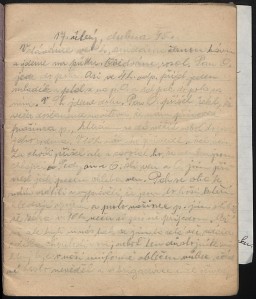
-
Collections Highlight: Auschwitz Through the Lens of the SS
ArticleKarl Höcker created a personal album of photographs chronicling SS officers’ activities at Auschwitz. Learn about this chilling collection.
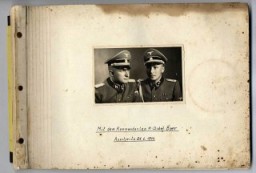
-
Gerda Blachmann Wilchfort describes the mood of passengers on the "St. Louis" after they were denied entry into Cuba
Oral HistoryGerda and her parents obtained visas to sail to Cuba on the "St. Louis" in May 1939. When the ship arrived in Havana harbor, most of the refugees were denied entry and the ship had to return to Europe. Gerda and her parents disembarked in Belgium. In May 1940, Germany attacked Belgium. Gerda and her mother escaped to Switzerland. After the war, they were told that Gerda's father had died during deportation.

-
The United States and the Holocaust, 1942–45
ArticleWhy did the United States go to war? What did Americans know about the “Final Solution”? How did Americans respond to news about the Holocaust? Learn more.

-
Kristallnacht
ArticleOn November 9–10, 1938, the Nazi regime coordinated a wave of antisemitic violence. This became known as Kristallnacht or the "Night of Broken Glass." Learn more

-
Celia Petranker
ID CardCelia was the youngest of three daughters born to Jewish parents living in Stanislav [Stanislawow], Poland. Her father was an ardent Zionist, and dreamed of moving his family to Palestine to help build a Jewish homeland. Celia and her sisters attended private Hebrew primary and secondary schools to help prepare them for their eventual immigration to Palestine. 1933-39: Celia's oldest sister, Pepka, left for Palestine one week after the Germans invaded Poland on September 1, 1939. Pepka's departure was…
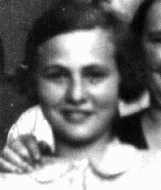
-
Gabrielle Weidner
ID CardGabrielle was the second of four children born to Dutch parents. Her father was a minister in the Seventh-Day Adventist Church. She grew up in Collonges, France, near the Swiss border, where her father served as a pastor. Gabrielle was baptized in the Seventh-Day Adventist faith at the age of 16. She attended secondary school in London, England. 1933-39: Gabrielle became increasingly active in the Seventh-Day Adventist Church, eventually becoming the secretary at the French-Belgian Union of Seventh-Day…

-
Karl Gorath
ID CardKarl was born in the small town of Bad Zwishenahn in northern Germany. When he was 2, his family moved to the port of Bremerhaven. His father was a sailor and his mother became a nurse in a local hospital. After his father died, Karl continued to live with his mother. Karl was 20 when he began training as a deacon at his parish church. 1933-39: Karl was 26 when his jealous lover denounced him and he was arrested at his house under paragraph 175 of the criminal code, which defined homosexuality as an…
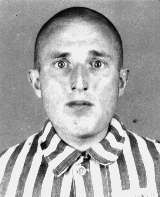
-
Carl Heumann
ID CardCarl was one of nine children born to Jewish parents living in a village near the Belgian border. When Carl was 26, he married Joanna Falkenstein and they settled down in a house across the street from his father's cattle farm. Carl ran a small general store on the first floor of their home. The couple had two daughters, Margot and Lore. 1933-39: Carl has moved his family to the city of Bielefeld, where he is working for a Jewish relief organization. Requests from this area's Jews to leave Germany have…
